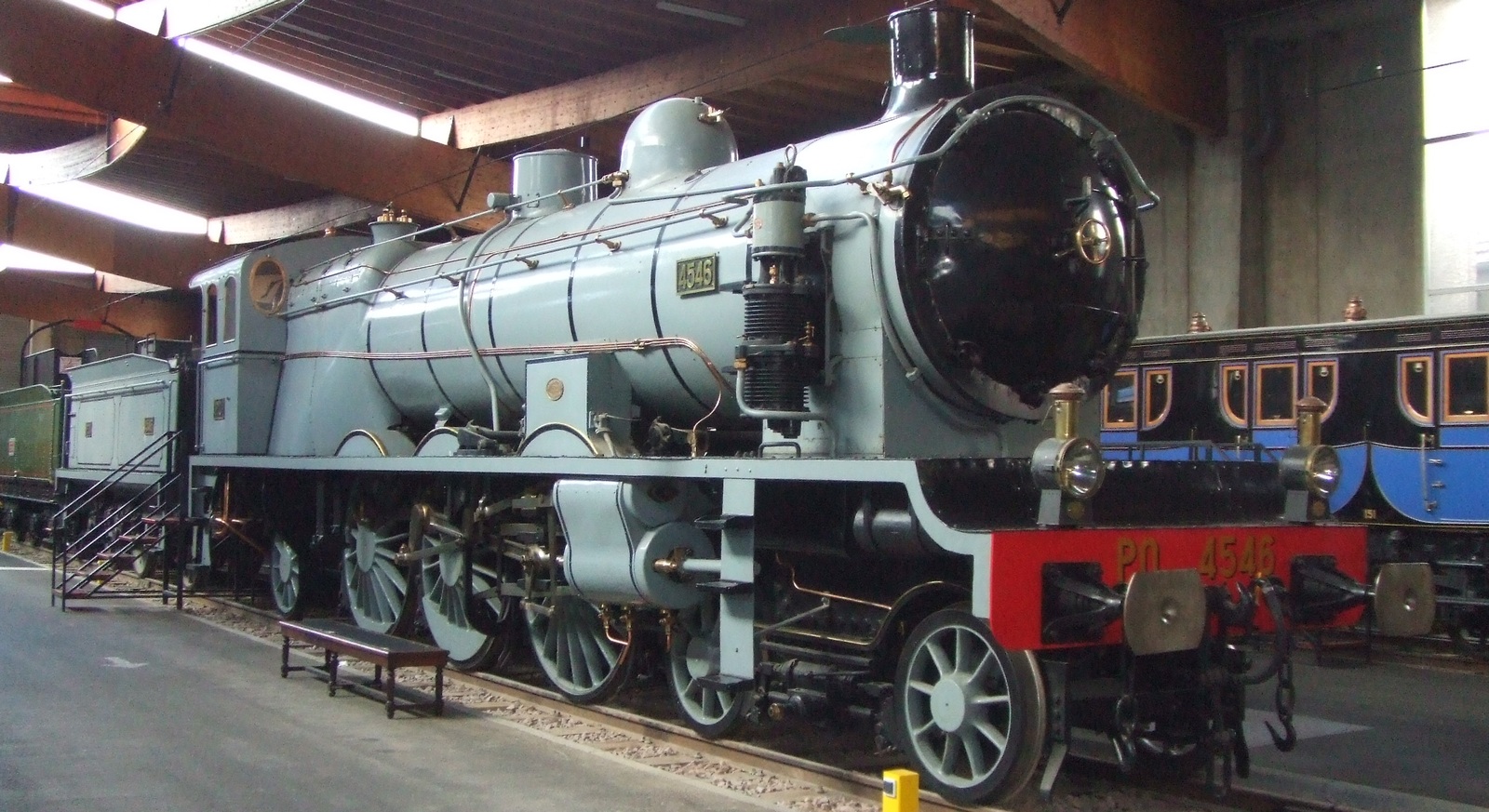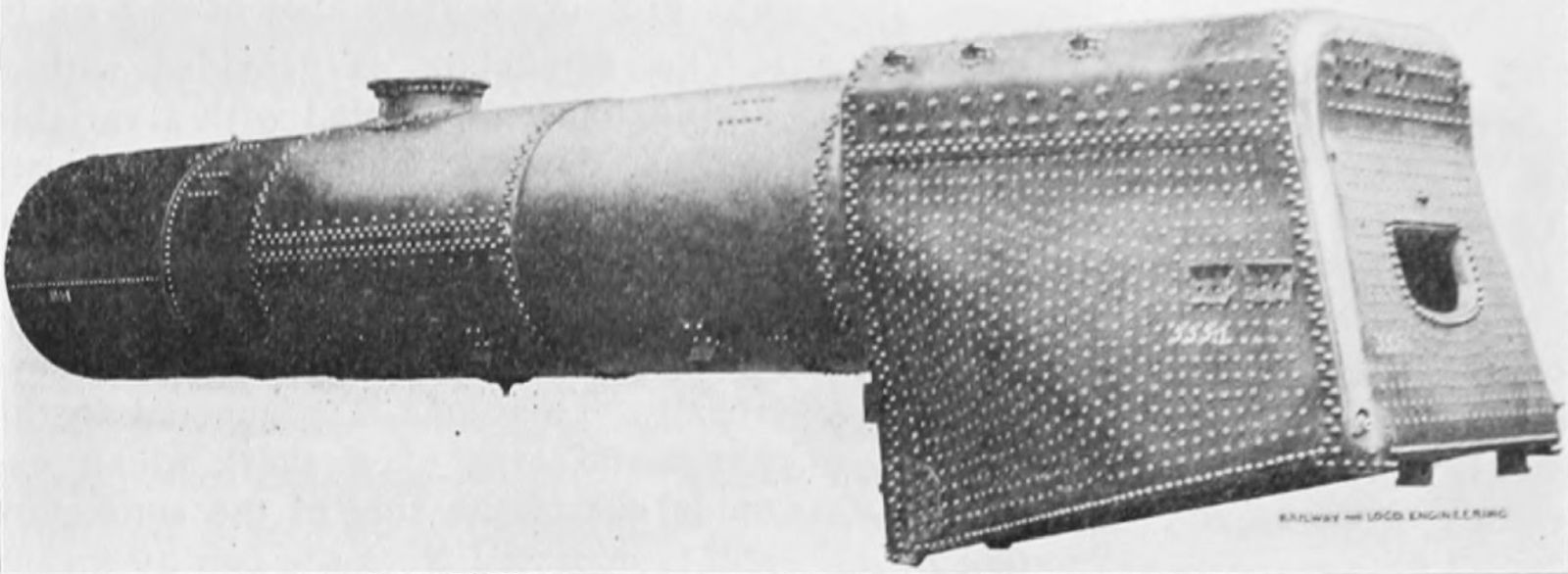Around 1905, the PO was looking for more powerful express locomotives, since the existing 4-6-0 locomotives of series 4001 to 4084 had reached their limits. The solution was the 4-6-2 wheel arrangement, also known as “Pacific”. This was the first Pacific in Europe to be used on main lines.

No. 4546 built by ALCO at the Cité du Train in Mulhouse
Hugh Llewelyn 
With the additional trailing axle, it was possible to install a larger firebox with a grate area of more than four square meters. In order not to shift the center of gravity too far back and thus away from the driving axles, the firebox had a trapezoidal layout. Since the front part was narrower, it could be drawn in between the wheels of the rear driving axle. Additionally, the firebox was of the Belpaire type to create a larger direct heating surface.

View of the boiler with the special shape of the firebox
Railway and Locomotive Engineering, September 1908
The power plant was of the Du Bousquet-De Glehn type, i.e. a four-cylinder compound engine with outer high-pressure cylinders that acted on the second driving axle and inner low-pressure cylinders that acted on the first driving axle. The driving wheels had a diameter of only 1,850 mm in order to be able to maintain a high average speed even on hilly routes. This was primarily the line from Limoges to Toulouse, which had gradients of up to 1.05 percent. Later, the locomotives with the numbers 3501 to 3589 were developed, in which the driving wheels were 10 cm larger and intended for flatter lines.
The first 40 examples were built by SACM and Hanomag from 1907 and still worked with saturated steam. On the relatively flat line between Paris and Les Aubrais, they reached an average speed of 88 to 95 km/h with a trailing load of 360 tonnes. From 1908, 30 other very similar locomotives were built by ALCO in the USA. From 1910, the last 30 that were made by the SFCM followed. From the factory they had a superheater and an enlarged diameter for the high-pressure cylinders.
Between 1932 and 1934, André Chapelon rebuilt twelve locomotives to numbers 4701 to 4712, which had a 4-8-0 wheel arrangement and delivered more than 4,000 hp. Another 25 4-8-0 locomotives followed in 1940 and 1941, which the SNCF designated as 240 P 1 to 25. The non-rebuilt locomotives received innovations such as Kylchap exhaust systems, superheaters, feedwater heaters or smoke deflectors during their service life. They became the 4-231 A 501 to 600 on the SNCF and were retired by 1954.